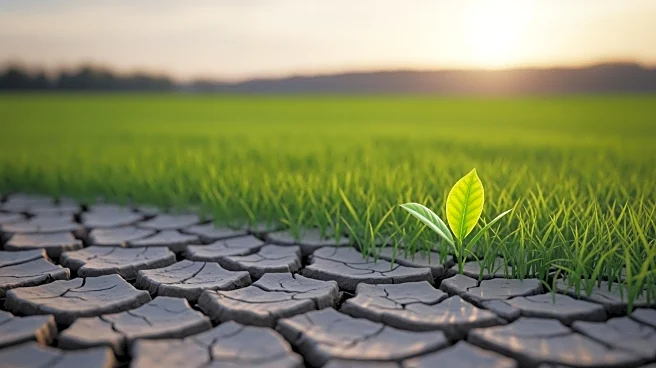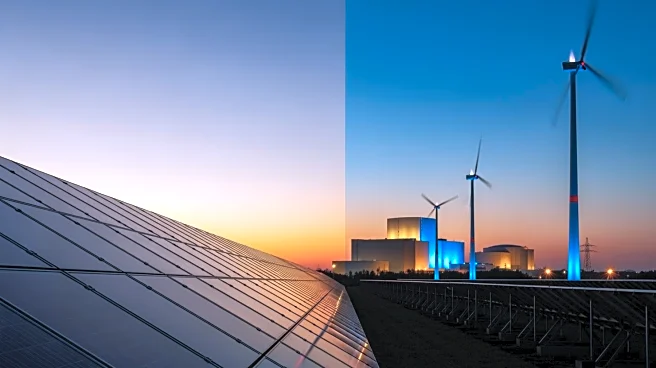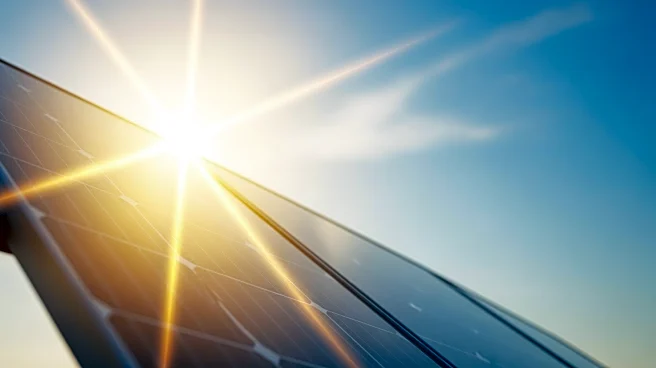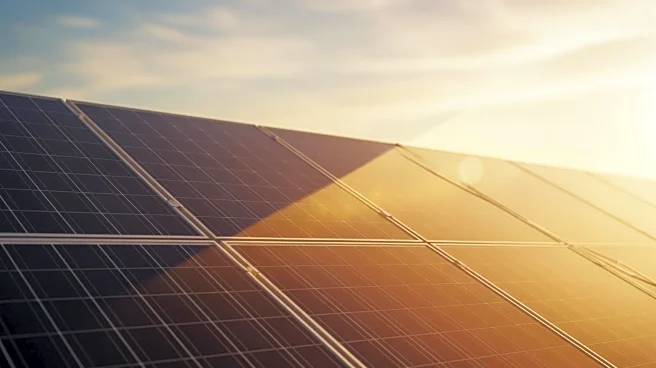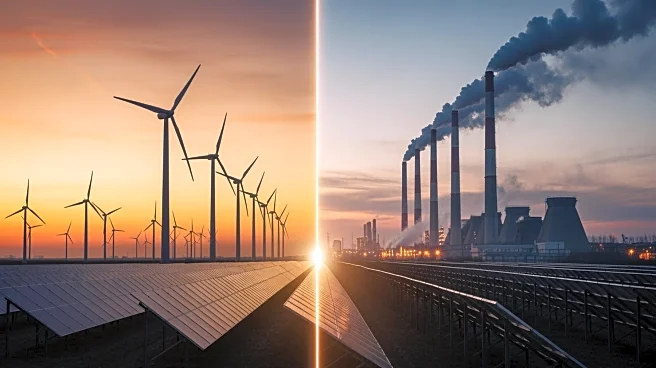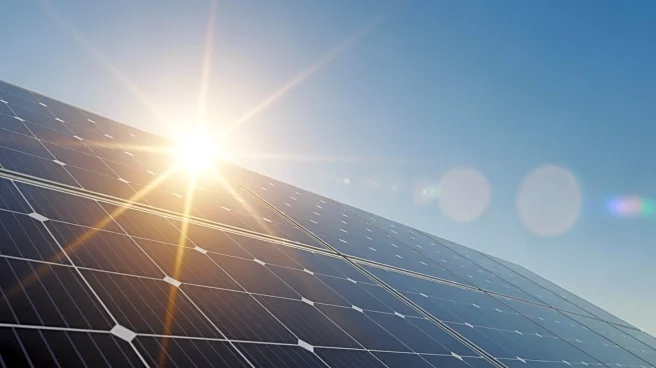What's Happening?
Pakistan is experiencing a significant shift towards solar energy due to successive increases in gas tariffs during the fiscal years 2023 and 2024. These tariff hikes, part of energy-sector reforms linked
to the International Monetary Fund program, aim to reduce the circular debt burden but have led to affordability challenges. Industrial and household consumers are increasingly turning to solar-based power solutions as a result. The Pakistan Energy Market Review 2025 by Renewables First highlights that natural gas tariffs rose by up to 193 percent for industrial categories and up to 150 percent for domestic consumers. This has impacted competitiveness, household budgets, and overall demand, with many industries scaling down operations due to unaffordable gas bills. Manufacturing clusters are shifting towards hybrid and solar power systems, while smaller enterprises and retail chains are investing in electric and solar heating alternatives. Middle-income households are also reducing consumption or switching to solar water heaters and electric cooking devices.
Why It's Important?
The shift towards solar energy in Pakistan is significant as it marks a structural change in the country's energy landscape. Rising gas tariffs have led to increased production costs for consumer goods, compressing disposable incomes and affecting economic activity. The transition to solar energy is supported by policy incentives such as net metering, zero customs duty on solar imports, and concessional financing for renewable installations. This shift enhances sustainability but presents new regulatory and financial challenges for utilities whose revenues depend on volumetric sales. The move away from fossil-based fuels is reshaping the gas and power sectors, reducing reliance on expensive and unreliable energy sources. The government's attempts to balance cost recovery with social protection remain limited, highlighting the need for efficient subsidy targeting and improvements.
What's Next?
The continued rise of solar installations in Pakistan is expected to further alter the energy landscape. Industrial users are accelerating investment in solar rooftops and captive hybrid systems to hedge against future tariff shocks. The government may need to address the regulatory and financial challenges posed by the shift to solar energy, ensuring that utilities can adapt to the changing energy consumption patterns. Efforts to expand access to affordable and environmentally friendly alternatives will be crucial in sustaining the reforms and supporting economic growth. The challenge will be to maintain the financial sustainability of gas utilities while promoting the adoption of renewable energy sources.
Beyond the Headlines
The transition to solar energy in Pakistan has broader implications for the country's energy policy and economic stability. As consumers seek relief from expensive fossil fuel supplies, the government faces the challenge of balancing energy reforms with social protection measures. The shift to solar energy could lead to long-term changes in energy consumption patterns, reducing the country's dependence on imported liquefied natural gas and enhancing energy security. However, the transition also requires careful management to avoid potential disruptions in the energy sector and ensure that the benefits of renewable energy are equitably distributed across different consumer groups.



